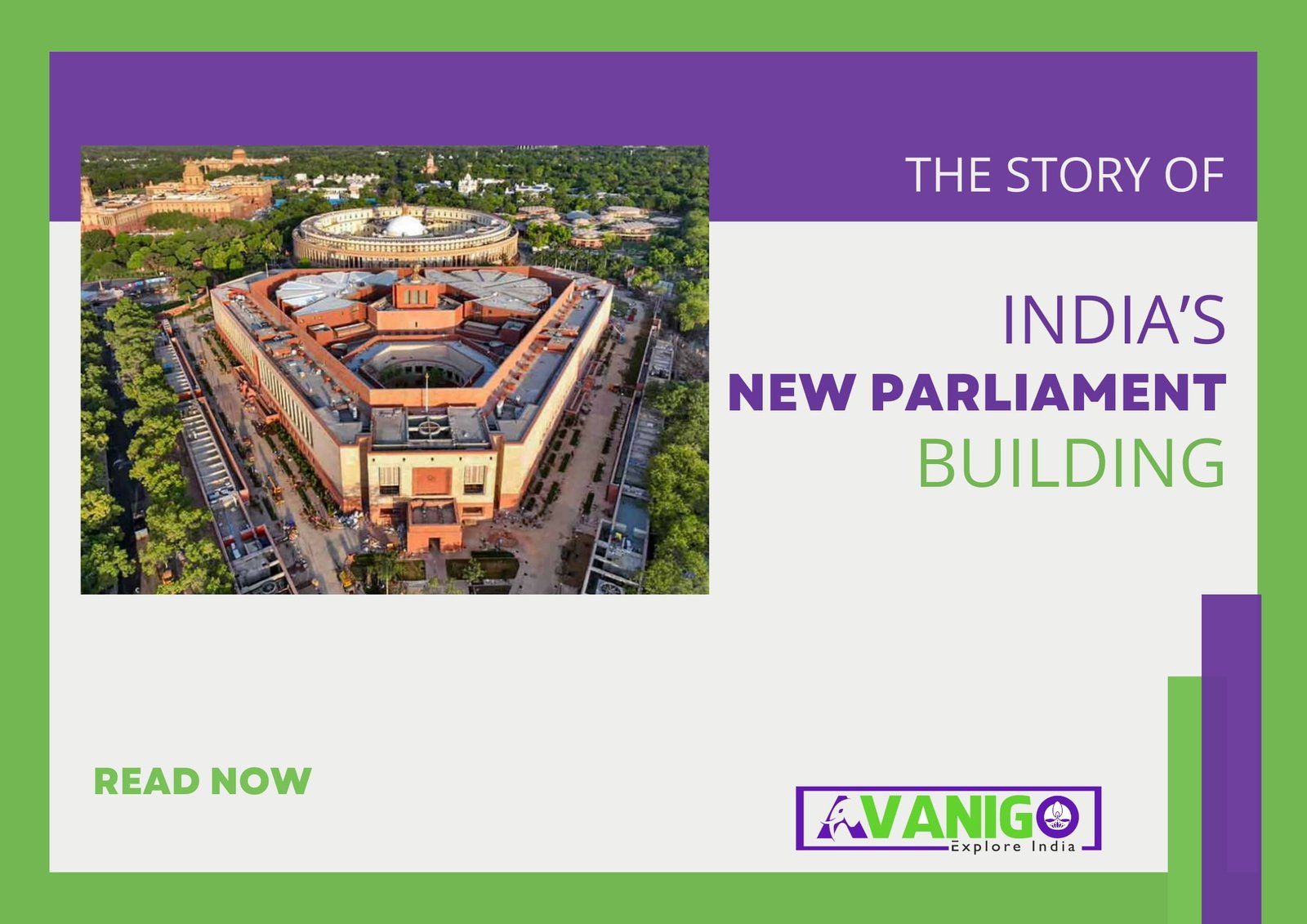A new era in India’s parliamentary democracy began with the opening of the new Parliament building India. The imposing triangular tower draws inspiration from the vibrant cultural nuances of the country while envisioning the futuristic needs of the world’s largest democracy.
But as we embark on this new journey, it is also time to recollect the architectural genius of the old parliament building India, which has witnessed many historic moments over the past 93 years.
Quick Navigation
The Circular Marvel of the Old Parliament House
The old parliament building India is an architectural jewel designed in the 1920s by two of the most renowned British architects, Sir Edwin Lutyens and Sir Herbert Baker. The construction of the old Parliament House began in 1921 and completed in 1927. It was originally called the Council House, housing the Imperial Legislative Council of British India.
The circular structure of the imposing building draws inspiration from the Roman Colosseum. The cream-coloured sandstone edifice has 144 pillars, each 27 feet high. At the time of Independence, this circular marvel served as the Parliament of India and witnessed the framing of the Constitution.
New Parliament Building India: Addressing Infrastructural Limitations
However, the rising strength of the Parliament raised infrastructural challenges related to seating capacity, space for offices, amenities, safety, and technology upgrades. The India parliament new building redresses these limitations and provides:
- Expanded seating capacity in Lok Sabha (from 552 to 888 seats) and Rajya Sabha (from 245 to 384 seats).
- Enhanced accommodation with modern offices, meeting rooms, and amenities.
- State-of-the-art facilities like digital voting, advanced acoustics, and audio-visual systems.
- Safety features such as earthquake resistance and improved fire safety.
- Sustainability elements like rainwater harvesting and solar power utilization.
Just like the name Bharat, the new Parliament building India encompasses traditional Indian art and culture through its architecture. The Lok Sabha Hall represents the Chakra or the wheel – the one in the Center of Indian flag, symbolizing the theme of national progress. The Rajya Sabha hall reflects the blossoming lotus, India’s national flower.
India Parliament New Building: Blending Tradition with Futuristic Vision
The new parliament building India seamlessly integrates India’s vibrant cultural heritage with a progressive, futuristic vision. Conceived as a part of the ambitious Central Vista Redevelopment project, the triangular-shaped building combines grandeur with functionality.
Some salient features of the new Parliament building are:
- Centrally air-conditioned building with modern amenities and sophisticated security systems.
- Spacious galleries and exhibitions depicting India’s culture and democracy.
- Intrinsic designs showing the diverse handicrafts and textile traditions of India
- Facilities for eco-friendly commuting, like parking for e-vehicles and e-bicycles.
- Advanced technological features like grid-connected solar power and rainwater harvesting.
- Provision for enhancing the number of seats to 1,400 in future expansions.
- Larger office spaces for smooth and efficient functioning.
- Barrier-free access for differently-abled visitors and employees.
The new Parliament building encapsulates the emerging aspirations of New India. Designed to last over 150 years, it provides a futuristic arena where the voice of the people can resonate for generations to come. The nation is already renowned for its eternal philosophy of Vasudhiava Kutumbakam.
The Architectural Ethos of Sir Edwin Lutyens and Central Vista
The India parliament new building forms part of the prestigious Central Vista project, set to rejuvenate the power corridors of New Delhi. Ironically, the original creator of Delhi’s Central Vista was Sir Edwin Lutyens, one of the architects of the existing Parliament building. The construction of the new Parliament building is one of the notable events in India after Independence.
Lutyens was chosen to design the new imperial capital of British India in Delhi. He conceptualized the Central Vista as the grand axis, including the Rashtrapati Bhavan at one end and the India Gate at the other. The Parliament House, North Block, and South Block flank the Central Vista along with the National Archives and other buildings interspersed with expansive lawns.
The new Central Vista project aims to build upon Lutyens’ legacy while transforming the area into a modern nerve centre. As we bid farewell to the old parliament building India, Lutyens’ aura still lives on in the lawns, fountains, and lamp posts dotting the Vista.
The Magnificent Architecture Hands Over the Baton
As the India parliament new building becomes operational, the old building will not vanish into oblivion. Plans are afoot to repurpose it into a ‘Museum of Democracy’ displaying India’s democratic heritage.
The inaugural ceremony used an interesting symbol of the past – the Sengol, a gold sceptre handed over to leaders during the Chola dynasty. Prime Minister Modi set the ancient Sengol in the new Parliament, linking the present to the traditions. Read about Pradhan Mantri Jan-Dhan Yojana
Moving Towards a Greater Democracy
The old Parliament House is an integral part of India’s journey as a young, free nation. While its imposing circular tower will continue to inspire, the new triangular Parliament House will script the next chapter in India’s governance.
As we celebrate the 77th year of Independence, both these architectural triumphs highlight the effervescent strengths of the world’s largest democracy.
Swetha is a Content Specialist, LinkedIn Branding and B2B Marketing Consultant. When she is not in the world of B2B, she researches the roots and beauty of Indian Culture and Traditions. She is the author of the book: 365 Days 365 Posts – The Guide to LinkedIn Personal Branding, available exclusively on Amazon. Connect with her on LinkedIn.

